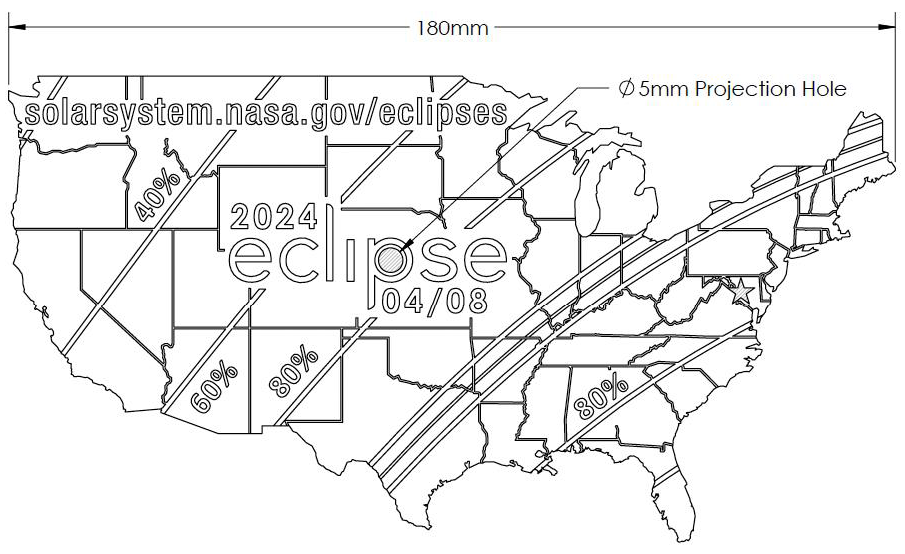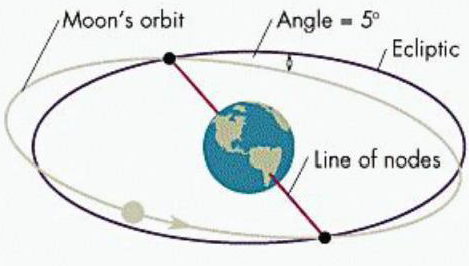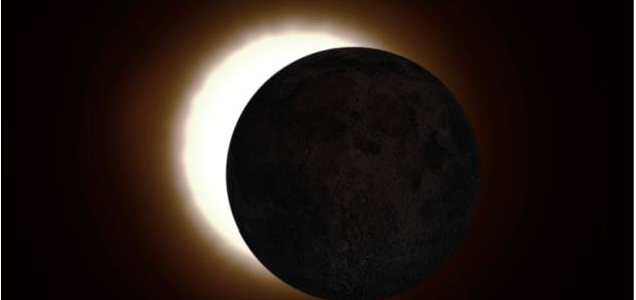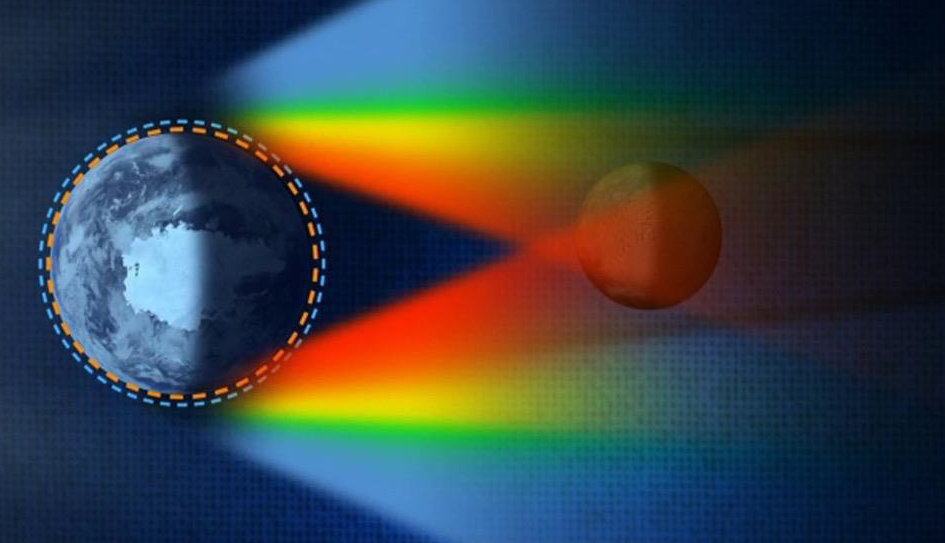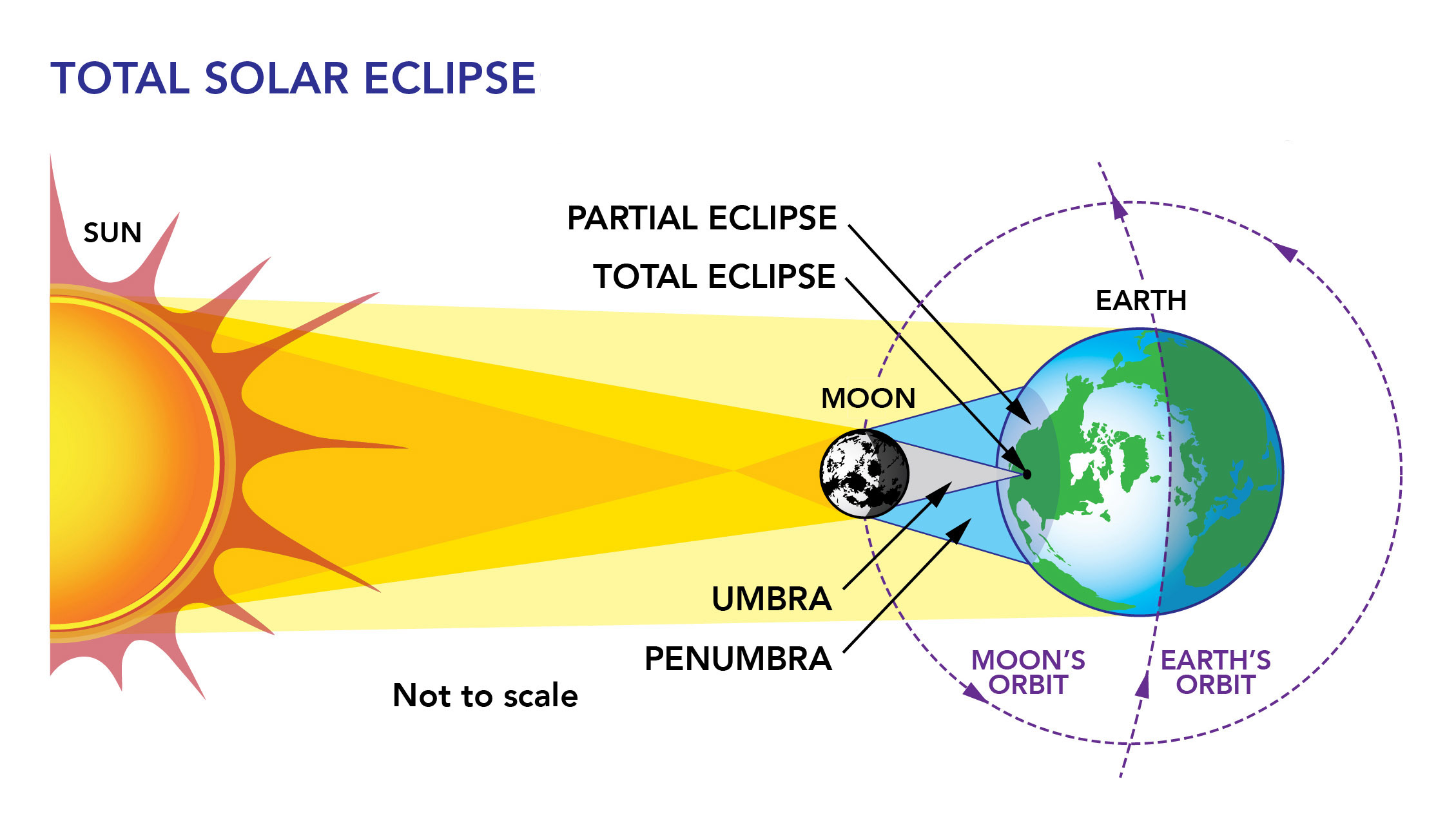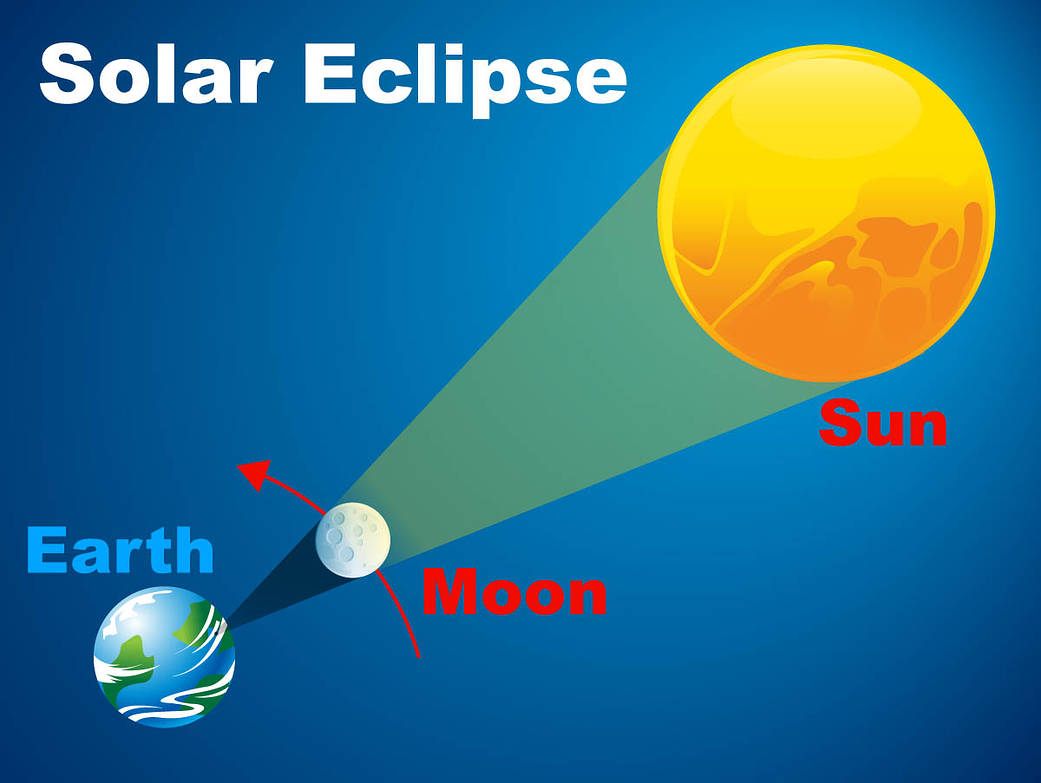Lesson Plans
What are the Different Types of Solar Eclipses?
Overview
In this lesson students will calculate the size to distance ratio of the Sun and the Moon from Earth to determine how a solar eclipse can occur.
Materials Required
- piece of yarn
- two pushpins
- a piece of cardboard larger than a piece of paper
- a piece of paper
- a pencil
- Student Sheets (optional) Google Docs or PDF
Procedure
Remember to never look directly at the Sun without proper safety equipment.
A solar eclipse occurs when the Moon passes between the Sun and the Earth. A total solar eclipse occurs when the Moon completely blocks the Sun; a partial solar eclipse occurs when only part of the Sun is blocked by the Moon. A third type of solar eclipse happens when the Moon is farther away in its orbit around the Earth and appears smaller, not completely blocking the disk of the Sun. This is called an annular solar eclipse. Because both the Earth and the Moon are moving, on some occasions observers may experience a total and an annular eclipse in the same event, known as a hybrid solar eclipse.
Guiding Question:
- Why do you think something small like the Moon can block something large like the Sun?
Steps:
-
Have students examine these images of the three types of solar eclipses.
Ask them to identify the differences in the images. "Why do you think they are different?"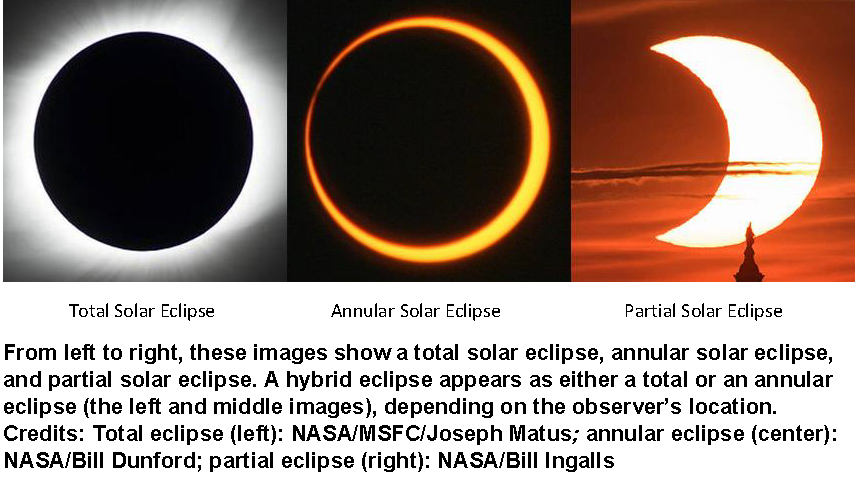
https://mynasadata.larc.nasa.gov/sites/default/files/inline-images/Eclipse%20type%20images_2.png -
Provide Background Information: Total vs. Partial Eclipses
Umbra and Penumbra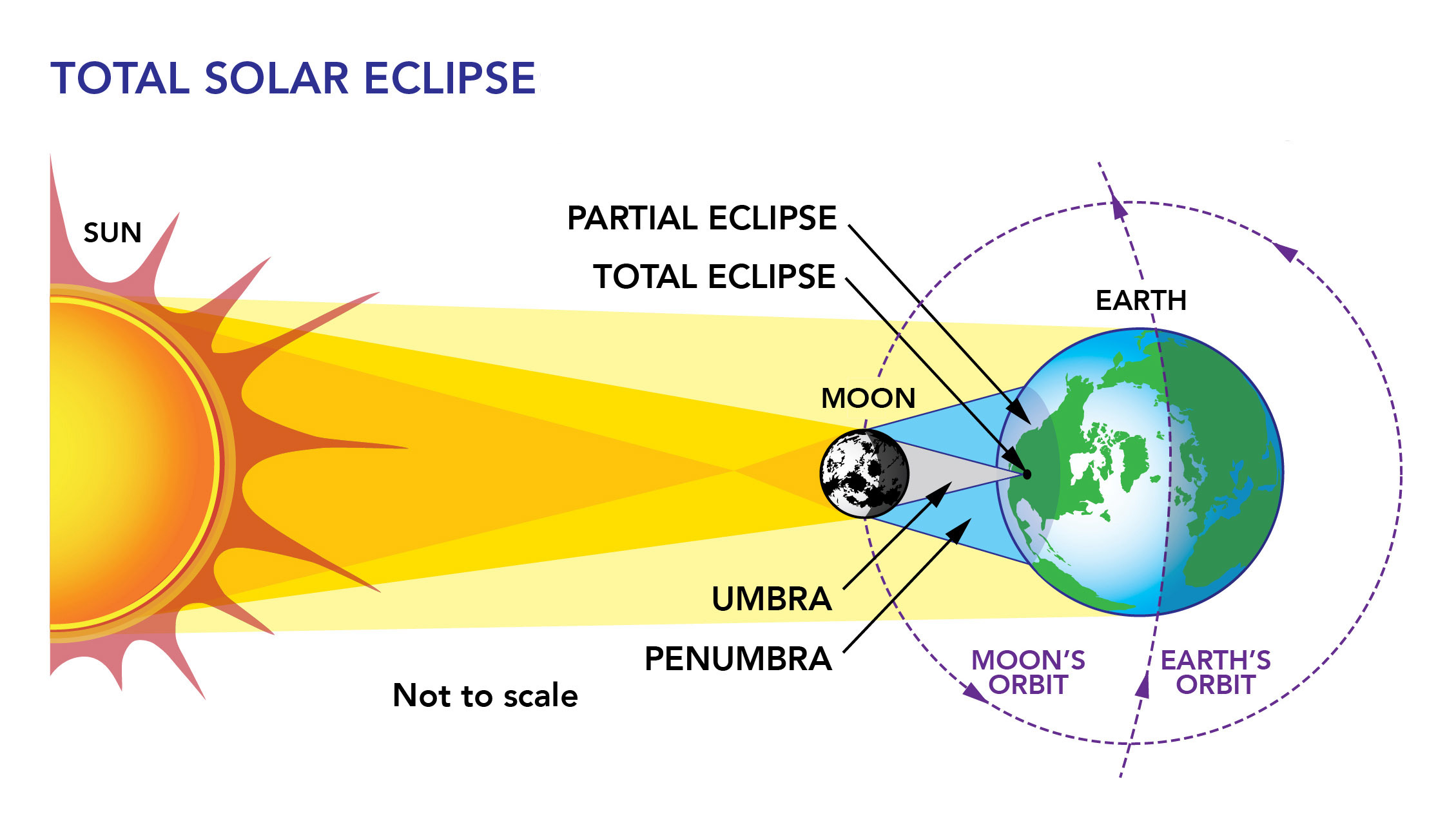
The Moon's shadow has two parts. The penumbra is the faint outer shadow of the moon. Partial eclipses are seen from within this shadow. The umbra is the dark inner shadow of the moon. Total eclipses are seen from within this shadow. | Credits: NASA's Goddard Space Flight Center | https://mynasadata.larc.nasa.gov/sites/default/files/inline-images/5661_Total_Solar_Eclipse_Shadows.jpeg - Tell students:
"You may experience a total or partial eclipse depending on where in the Moon’s shadow you are located. Observers in the umbra shadow will experience a total solar eclipse. Observers in the penumbra shadow will experience a partial solar eclipse. The umbra shadow is much smaller, making experiencing a total solar eclipse more rare."
- Tell students:
- Have students watch: 2017 Eclipse Shadow Cones. This animation shows the umbral and penumbral shadow cones traveling across the surface of the Earth during the August 21, 2017 total solar eclipse.
-
Provide Background Information: Total Vs. Annular
Perigee and Apogee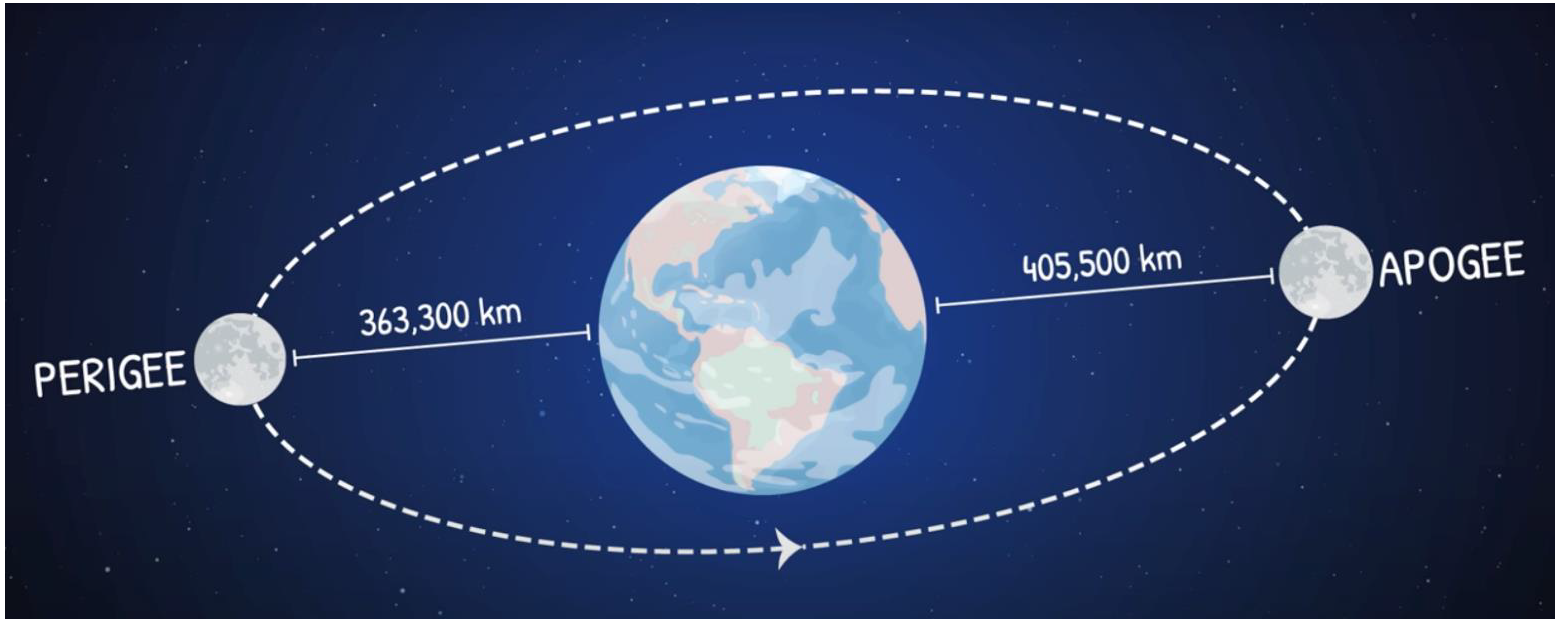
This image shows the difference between a Moon at its closest point to Earth, when supermoons occur, and at its farthest. Credit: NASA/JPL-Caltech, https://mynasadata.larc.nasa.gov/sites/default/files/inline-images/perogee%20and%20apogee.png
- Tell Students: "The difference between a total and annular eclipse has to do with the distance between the Moon and the Earth. The reason that the Moon is not always the same distance from the Earth is because the shape of the Moon’s orbit around Earth is in the shape of an ellipse, or an oval. During a solar eclipse, if the Moon is closer to perigee, the eclipse would be total. If the Moon is closer to apogee, the eclipse would be annular.
- The Moon’s orbit is only slightly elliptical, meaning that it is very close to a circle. But when you are dealing with large distances in space, even a slight elliptical shape can make a difference! This elliptical orbit also explains supermoons, which occur when the Moon is full and is closest to the Earth in its orbit. Most moon and planetary orbits are elliptical, and a truly circular orbit is rare in the universe."
-
Have students Model: You can model the shape of an ellipse with a piece of yarn, two pushpins, a piece of cardboard, a piece of paper and a pencil.

Steps to draw an ellipse, Image Credit: Christina Milotte, NASA, https://mynasadata.larc.nasa.gov/sites/default/files/inline-images/orbit%20model%202_0.png
- Find a piece of cardboard bigger than the size of a piece of paper. A pizza box works nicely.
- Put a piece of paper on top of the cardboard.
- Tie your yarn in a loop. The loop should be about half the size of the width of the paper.
- Push the two pushpins through the paper into the cardboard, about 2 inches apart to begin.
- Loop the yarn around both pushpins.
- Use your pencil to stretch the yarn into a sort of triangle, keeping the yarn tight.
- Draw an ellipse by moving your pencil around the pushpins.
- Draw an ellipse with the pushpins very close together. That will approximate the shape of the Moon’s orbit.
- Remove the pushpins and choose one of the holes and label it as Earth.
- Draw the Moon at perigee and apogee on the orbit and label them.
- Experiment with the shape of the ellipse by moving the pushpins closer together and farther apart.
- Exploring the Math: "The phenomenon of a total solar eclipse can occur because of the ratio between the size of the Moon and the Sun and the distance between each object from Earth. The Sun is 400 times bigger than the Moon, but the Moon is 400 times closer to Earth than the Sun. This perfect ratio allows the Sun and the Moon to appear about the same size in the sky. Even a slight variation in this ratio determines if observers experience a total solar eclipse or an annular solar eclipse. If the Moon is farther away in its elliptical orbit around Earth, observers will experience an annular solar eclipse."
In the Calculating Ratios of Eclipses interactive, you can practice the ratio calculations.
Teachers who are interested in receiving the answer key, please complete the Teacher Key Request and Verification Form. We verify that requestors are teachers prior to sending access to the answer keys as we’ve had many students try to pass as teachers to gain access.
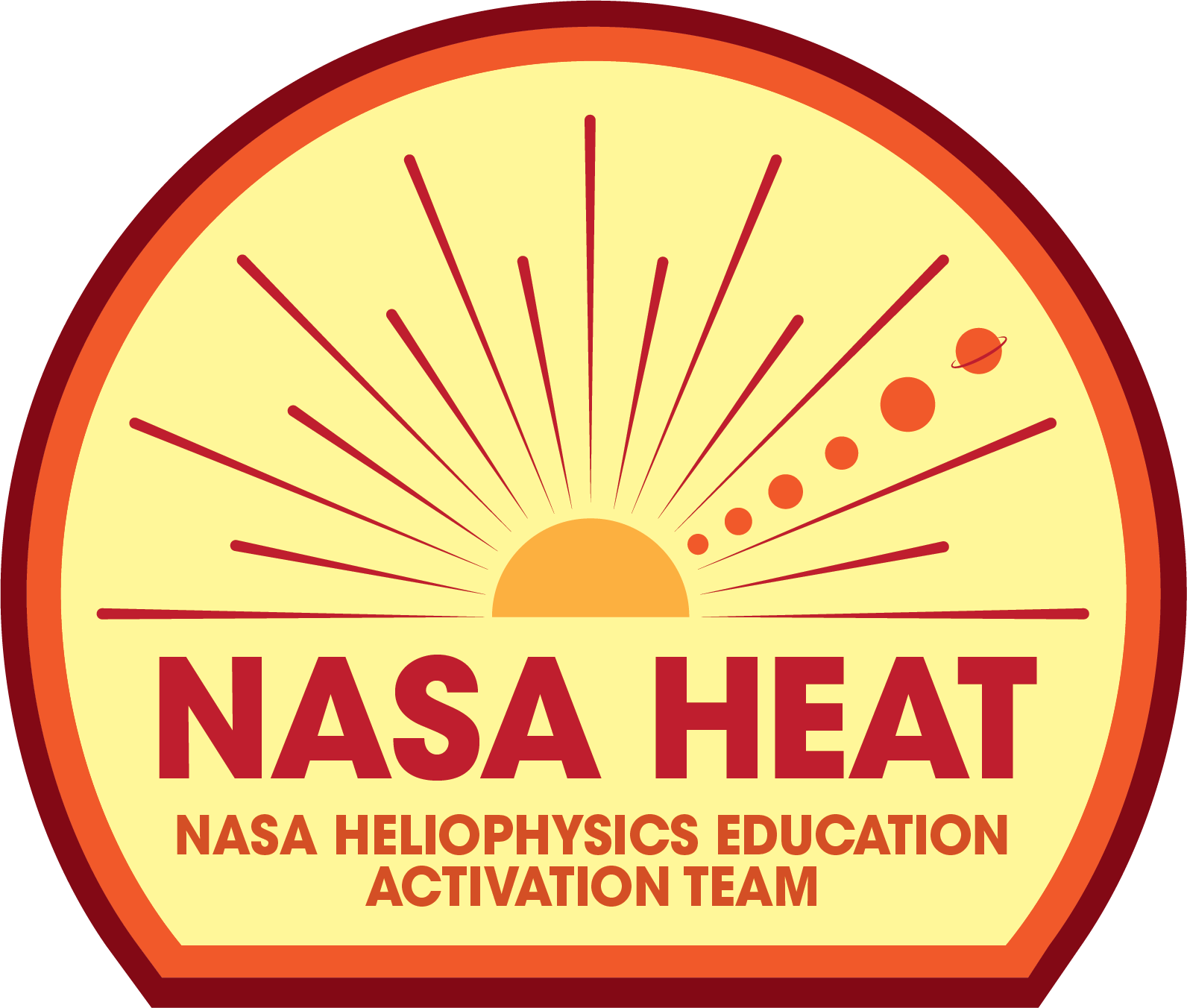
Sources:
- Types | About. (n.d.). NASA Solar System Exploration. Retrieved March 2, 2023, from https://solarsystem.nasa.gov/eclipses/about-eclipses/types
- STEREO. (2022, February 8). STEREO. Retrieved February 26, 2023, from https://stereo.gsfc.nasa.gov/classroom/eclipse.shtml
- Supermoons | Moon in Motion – Moon: NASA Science. (2021, May 26). Moon. Retrieved February 26, 2023, from https://moon.nasa.gov/moon-in-motion/supermoons/
- Wright, E. (2015, September 9). SVS: 2017 Eclipse Shadow Cones. NASA Scientific Visualization Studio. Retrieved March 2, 2023, from https://svs.gsfc.nasa.gov/4321
- Geometry | Science – NASA Solar System Exploration. (n.d.). NASA Solar System Exploration. Retrieved April 6, 2023, from https://solarsystem.nasa.gov/eclipses/science/geometry/
Disciplinary Core Ideas:
- ESS1A: The Universe and its Stars
Crosscutting Concepts:
- Cause and Effect
Science and Engineering Practices:
- Developing and Using Models
- Model Earth-Sun-Moon system.
- Explain different types of solar eclipses.
Why do you think something small like the Moon can block something large like the Sun?
"Studying the innermost part of the corona – visible only during total solar eclipses – is key to answering fundamental questions about how heat and energy are transferred from the Sun out into the solar wind, the constant stream of particles that the Sun spews into the solar system. The solar wind can impact humans and technology at Earth, so understanding how it becomes accelerated at the Sun can help predict its impacts at home."
Learn more at NASA Eclipse Science.
Source:
NASA Research | Science. (n.d.). NASA Solar System Exploration. Retrieved February 26, 2023, from https://solarsystem.nasa.gov/eclipses/science/nasa-research/
- Internet Required
- One-to-One (tablet, laptop, or CPU)
- One-to-a-Group
- Teacher computer/projector only

